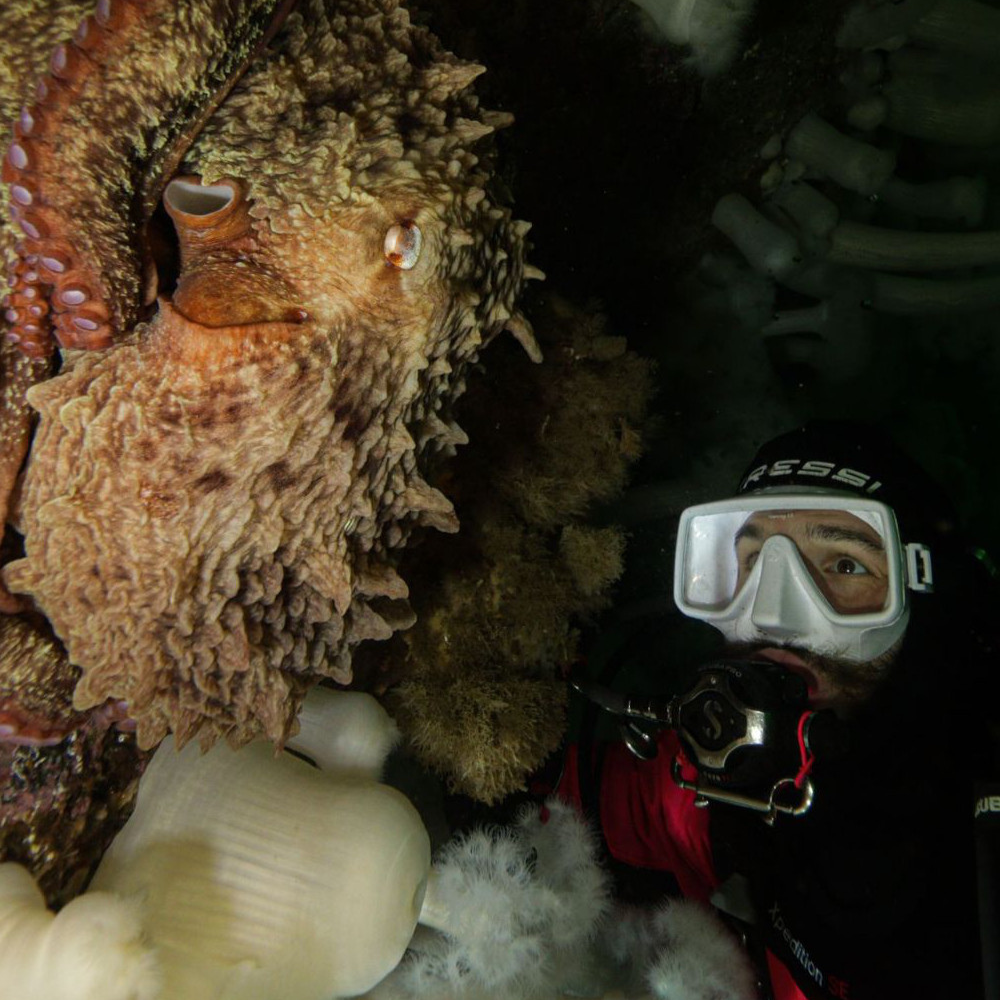SIDEMOUNT DIVING: WHAT AND WHY?
Sidemount diving in Vancouver has been a topic that a lot of people are interested in nowadays. Should you get the training? Is sidemount diving worth it? Why do people dive sidemount? All good questions. Since I started training divers in Vancouver I have seen the number of divers choosing sidemount increase by an incredible amount. There are a few reasons why sidemount diving in Vancouver, even in open water, is becoming a lot more popular.
Just to give a little background, sidemount diving was developed for cave diving and exploration. The goal was to have a modular system that was super low profile and would allow the diver to rearrange their equipment throughout the dive based on their needs at the time. Not only that, but you have at least 2 completely independent gas supplies (tanks) each with their own working first and second stage regulators so if one were to completely fail, you still have a working system to get you safely to the surface.
WHAT ARE SOME BENEFITS OF SIDEMOUNT?
Since sidemount was intended for use in caves, there were a lot of divers (and still are) who do not think it is the best way to dive in open ocean. While it is true that it wasn’t designed for that, if you look at some of the benefits it’s not hard to understand why so many of us choose to use it as a tool for all types of diving. For example, wreck diving in sidemount in BC, since we don't have as easy access to caves, is just one great use for sidemount diving in Vancouver.
When you mount your tanks onto your sidemount harness, as the name implies, they will sit on either side of your body. One benefit of this is the tanks are now in line with your center of gravity. A lot of divers will know the feeling of the “tank roll” where you start to rotate your body sideways and you feel the tank on your back start to tip more and more. The heavier the tank, the more you will feel it rolling. Because of the way sidemount tanks are positioned, you never get tank roll. Maintaining good trim and body position is actually easier for a lot of divers in sidemount because your center of gravity is no longer shifted up above your back because of a big heavy tank. This means you are wider and more stable in the water.
Two more benefits you have right away with the tanks on your sides are visibility and accessibility. A properly adjusted tank should sit with the first stage and valve right under/behind your armpit. That way it is protected, reduces drag while swimming, AND can easily be reached and seen. If there is a leak or entanglement, like when wreck diving on sidemount in BC, you can look down and identify the problem and easily reach to fix it. You are also a lot less likely to have any entanglement issues when diving because you don’t have the extra clearance issues to worry about that you would with a normal backmount set up.
I also mentioned that since your tanks are separated from each other you have a redundant gas supply. This is one reason why scuba divers are choosing sidemount diving in Vancouver for a solo or self-reliant course. A standard backmount and pony bottle rig for solo diving is becoming less common because of the limitations of the equipment arrangement. Before taking one of these courses, learn to scuba dive in sidemount in Vancouver with us! More info HERE
Learning to scuba dive with a sidemount configuration can also be safer in buddy teams because of that extra redundancy. If 1 diver is diving backmount and runs out of air you are donating an independent gas supply to them. A typical setup will include a long hose for sharing gas situations so as to create space once the emergency is dealt with. In all cases the sidemount diver even has the option to remove their donated tank to the other diver (assuming conditions and training allow) and complete the ascent normally.
Sidemount diving in Vancouver is also a good option to consider for divers with back problems. Since you don’t have a tank strapped onto your back, the strain of wearing your whole kit in and out of the water can be greatly reduced. Yes, you are most likely going to be making multiple trips if you are shore diving, but divers are usually slow and like to take their time anyways!
Conclusion
Over-all for me, scuba diving while using sidemount is definitely a great tool for certain situations. It absolutely excels in more confined/overhead spaces like caves and wrecks, but it can also be the right choice when diving in open ocean. After diving sidemount in Vancouver and training divers with sidemount for several years in the pacific northwest, both for recreational sport diving and technical diving, I will say that it is not the one solution to all dives (nothing ever is). It is however becoming more popular for a reason and with so many agencies like PADI, SDI, TDI, and SSI offering quality training and education it is also more accessible than ever. Our course to learn to scuba dive in sidemount in Vancouver is HERE. For well rounded divers I think having the ability to dive and understand a sidemount configuration is very valuable to have in your “toolkit”. Not only does it increase your overall dive knowledge but it will open doors later down the road if you want to try other styles of diving.
- Choosing a selection results in a full page refresh.











